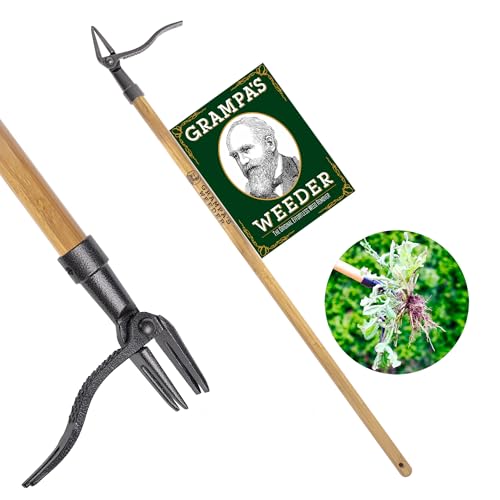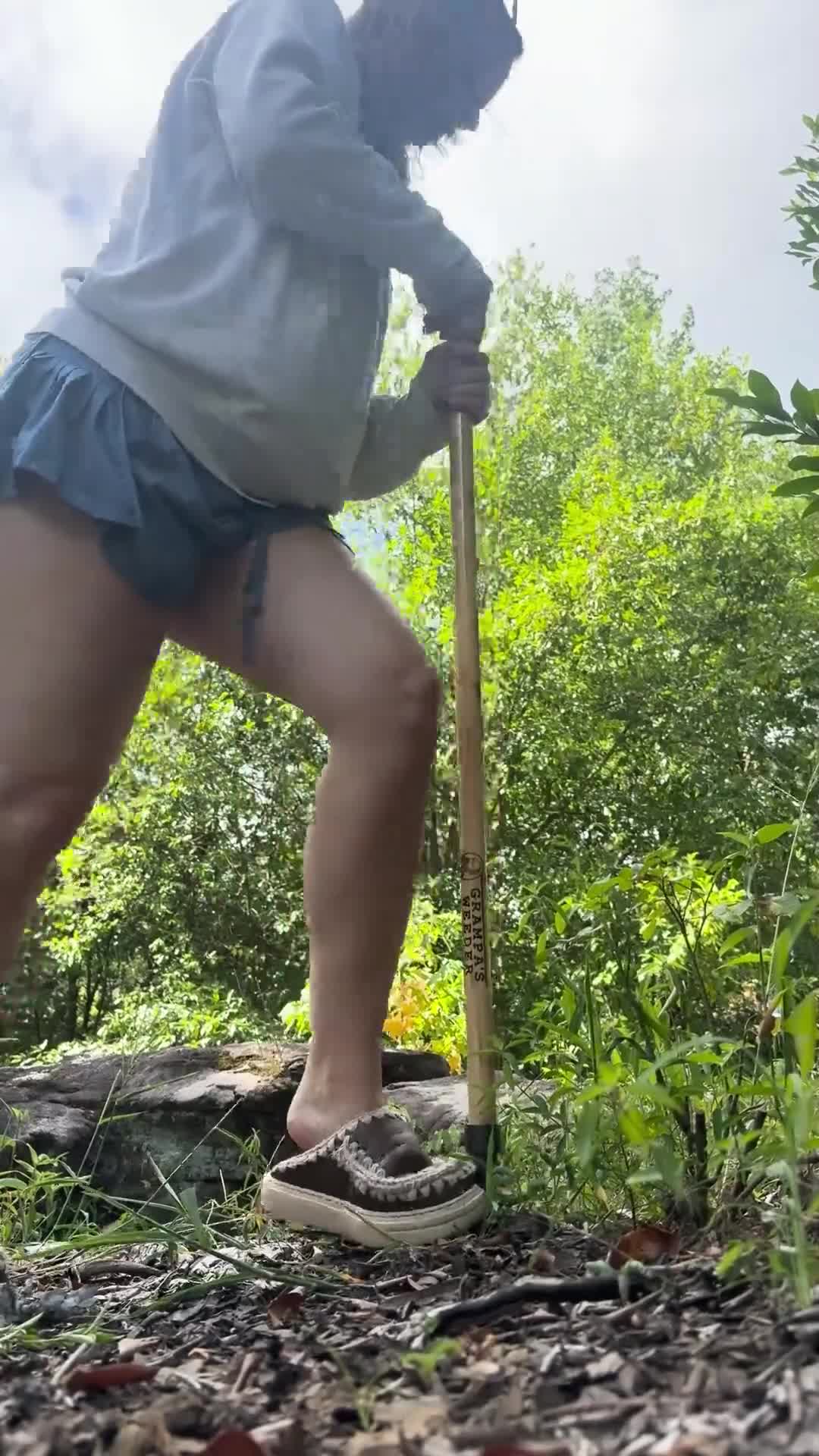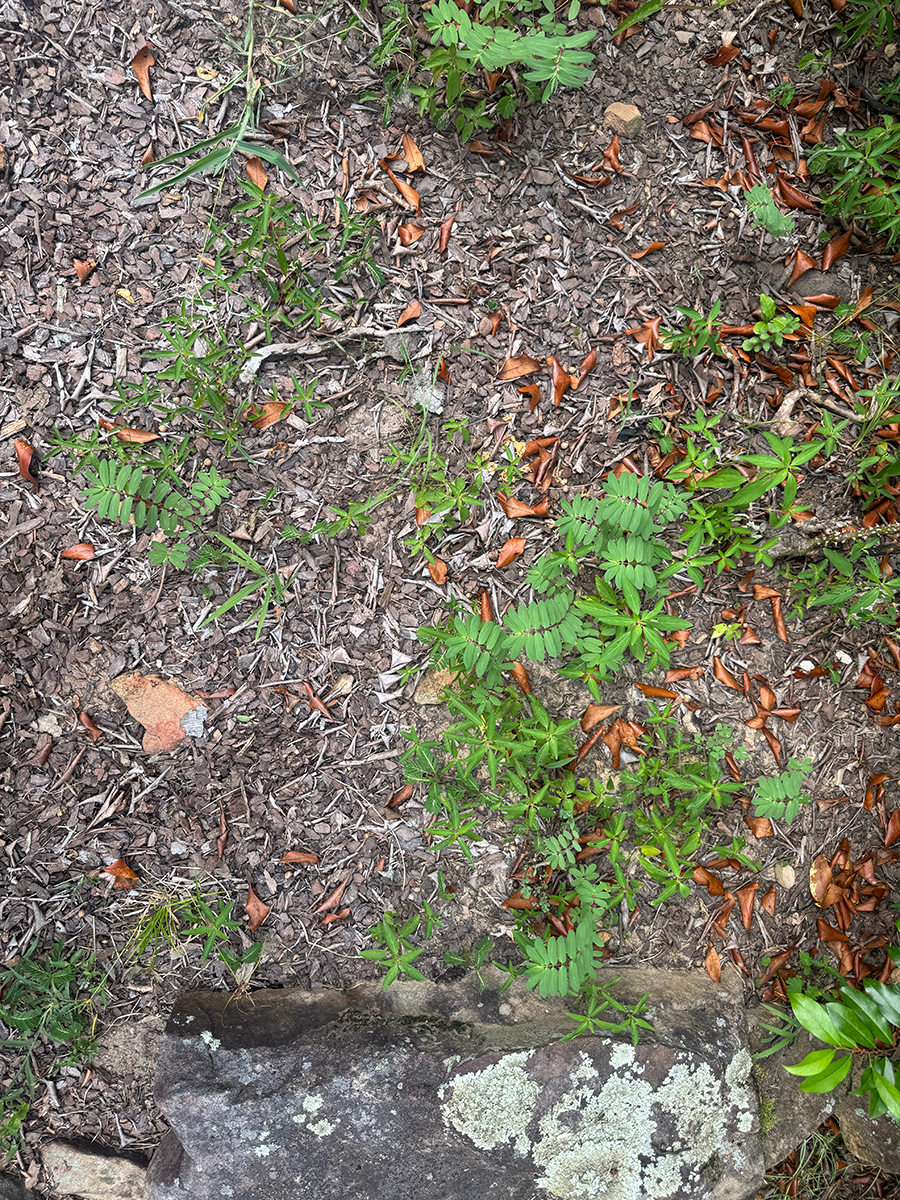As if getting on your hands and knees to weed isn’t bad enough, I’ve personally had an extra hard time maintaining my garden this year while being pregnant—and it shows. I didn’t get around to laying landscaping fabric or cardboard or mulch in any of my beds this spring as a preventative measure. Between the immense heat we’ve had in my area the past few weeks killing so many of my plants plus my beds being overtaken by weeds, my garden really is giving “forgive her, she’s pregnant in the summer.” Thank goodness for (hopefully) understanding neighbors.
Quite frankly, getting on my hands and knees in the yard is out of the question right now, but I’ve officially reached the point of these weeds driving me insane (is garden nesting a thing?)—something had to be done. While I opt to use a non-toxic weed and grass killer wherever I can, I don’t use this in my garden beds and needed another solution. Enter: Grampa’s Weeder.
Grampa’s Weeder The Original Stand Up Weed Puller Tool

I know you’ve seen this tool on social media at least once. The premise seems pretty simple: you stick the tool right over the root of the weed, press down on the lever with your foot to fully embed the spikes, then take your foot off the lever and pull the tool towards it. Releasing the lever and pulling towards it allows the spikes to close around the roots of the weed, pulling the entire plant up from the ground—no kneeling required.
Turns out, it really is that simple to use—sort of. I took this weeding tool to my very overgrown and sad rose garden to see how much damage I could do, and I was fairly impressed by the results. The weeder truly is a breeze to use. I barely needed to use any force to push the tool into the ground, and it did fully pull out the entire plant, roots included. The only bending I had to do was to occasionally pick up a rogue weed that fell back into the bed after being pulled out, or any weeds that were too small for the tool to pull out.

Using the weeder really is as simple as the company claims.
On that note, there are a few caveats I have with the Grampa’s Weeder tool. For starters, standing up made it much harder to find where exactly some of these plants’ root systems originated (looking at you, crabgrass). Usually when I’m weeding I’ll use my hands as my guide to find out where the root starts, so I definitely made a few placement mistakes and ended up just pulling up dirt in some spots (it’s just unintended aeration…my garden loves it).
Secondly, if the weed is too small or the root system is particularly long, the Grampa’s Weeder is going to struggle getting a full grasp on it. I only ran into a trailing root system once that gave me an issue, but there were a few little weeds that it seemed like it probably would’ve been easier to just pull up by hand because the tool dropped them right back onto the bed after being pulled out.
Finally, keep in mind the soil you have. My soil is extremely rocky, and I ran into a few spots that I needed to readjust the weeder or just pull weeds out by hand because a rock was in the way. The bed I was weeding also has a very large shrub in it, and it occasionally pulled up part of the root system of that plant.
 Hannah Jones for Country Living
Hannah Jones for Country Living
My very sad rose garden, completely overgrown with weeds and covered in old mulch and dead leaves.
 Hannah Jones for Country Living
Hannah Jones for Country Living
She’s still far from looking good, but I was able to remove a decent patch of weeds in just a few minutes. As you can see, there’s a decent bit of dirt removed, but I could easily cover that with mulch—if only my mulch wasn’t over a year old at this point.
I could also just let the results speak for themselves (just please don’t judge the before—I’m pregnant and it’s summer, remember!). The biggest difference you’ll notice in the results (other than my comfort level) is that using the weeding tool creates holes in the ground. This could easily be covered by mulch, but if that bothers you too much then you may want to stick to hand weeding. I however, will not.

